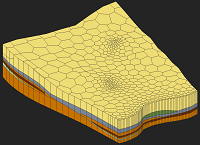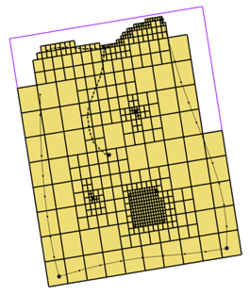GMS:UGrid Module: Difference between revisions
From XMS Wiki
Jump to navigationJump to search
No edit summary |
No edit summary |
||
| Line 1: | Line 1: | ||
{{UGrid links}} | {{UGrid links}} | ||
The UGrid module is the newest module in GMS and is used with unstructured grid (UGrid) geometric objects. Unstructured grids are very flexible. They can include many types of cells including 2D and 3D cells and cells with any number of faces and nodes. This type of geometric object is used with [[GMS:MODFLOW-USG|MODFLOW-USG]] which uses a finite volume approach. Eventually UGrids will be used for all the things that [[GMS:2D_Grid_Module|2D Grids]] and [[GMS:3D_Grid_Module|3D Grids]] are currently used for. | The UGrid module is the newest module in GMS and is used with unstructured grid (UGrid) geometric objects. Unstructured grids are very flexible. They can include many types of cells including 2D and 3D cells and cells with any number of faces and nodes. This type of geometric object is used with [[GMS:MODFLOW-USG|MODFLOW-USG]] which uses a finite volume approach. | ||
Eventually UGrids will be used for all the things that [[GMS:2D_Grid_Module|2D Grids]] and [[GMS:3D_Grid_Module|3D Grids]] are currently used for. A UGrid is similar to the old 3D grids and meshes available in GMS but much more flexible. UGrids can use any type of cell, meaning cells with any number of faces and nodes. This flexibility allows for more realistic modeling of geologic features such as pinchouts. | |||
Interfaces to the following 3D finite difference models are provided in this module: | Interfaces to the following 3D finite difference models are provided in this module: | ||

